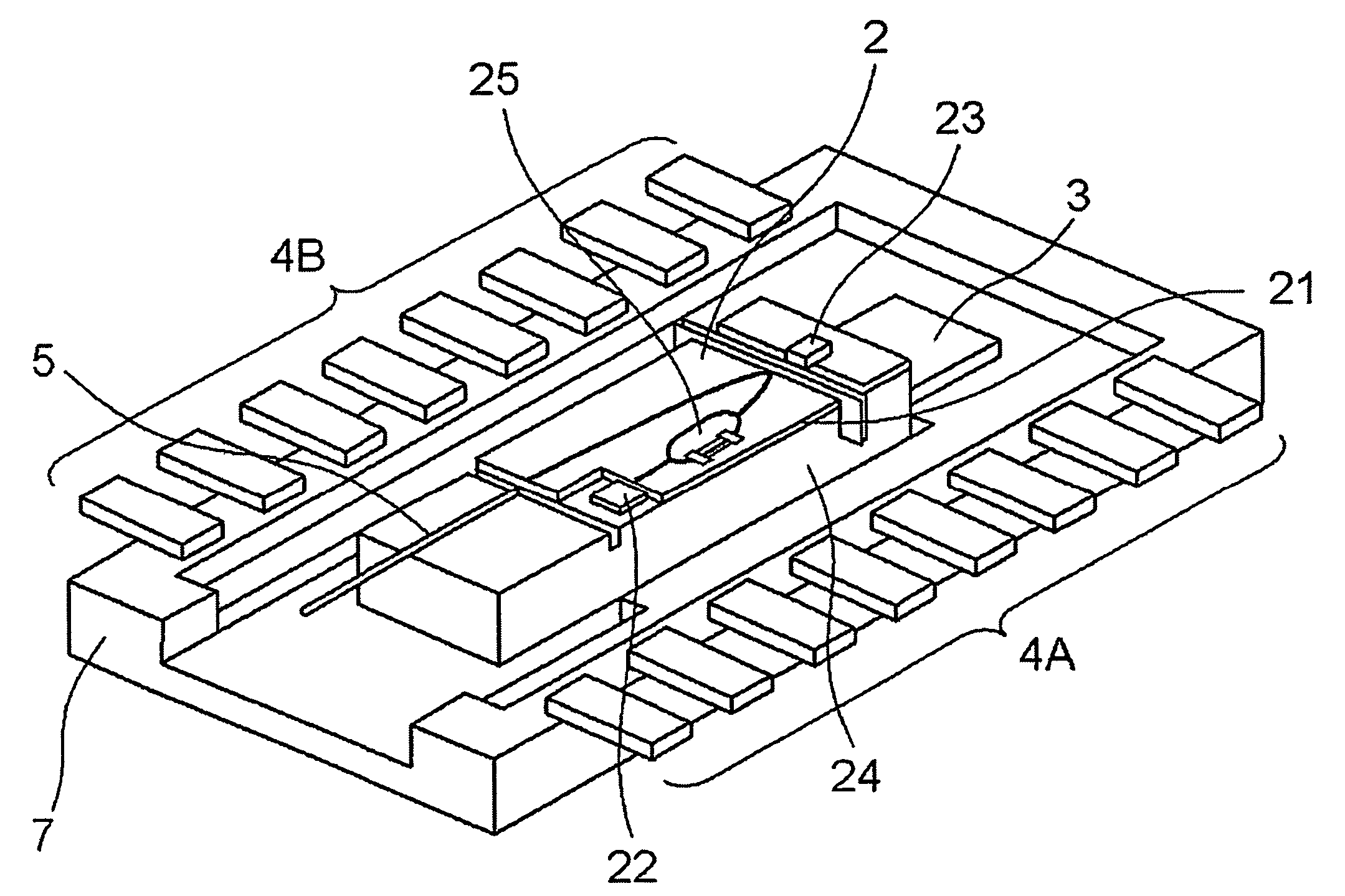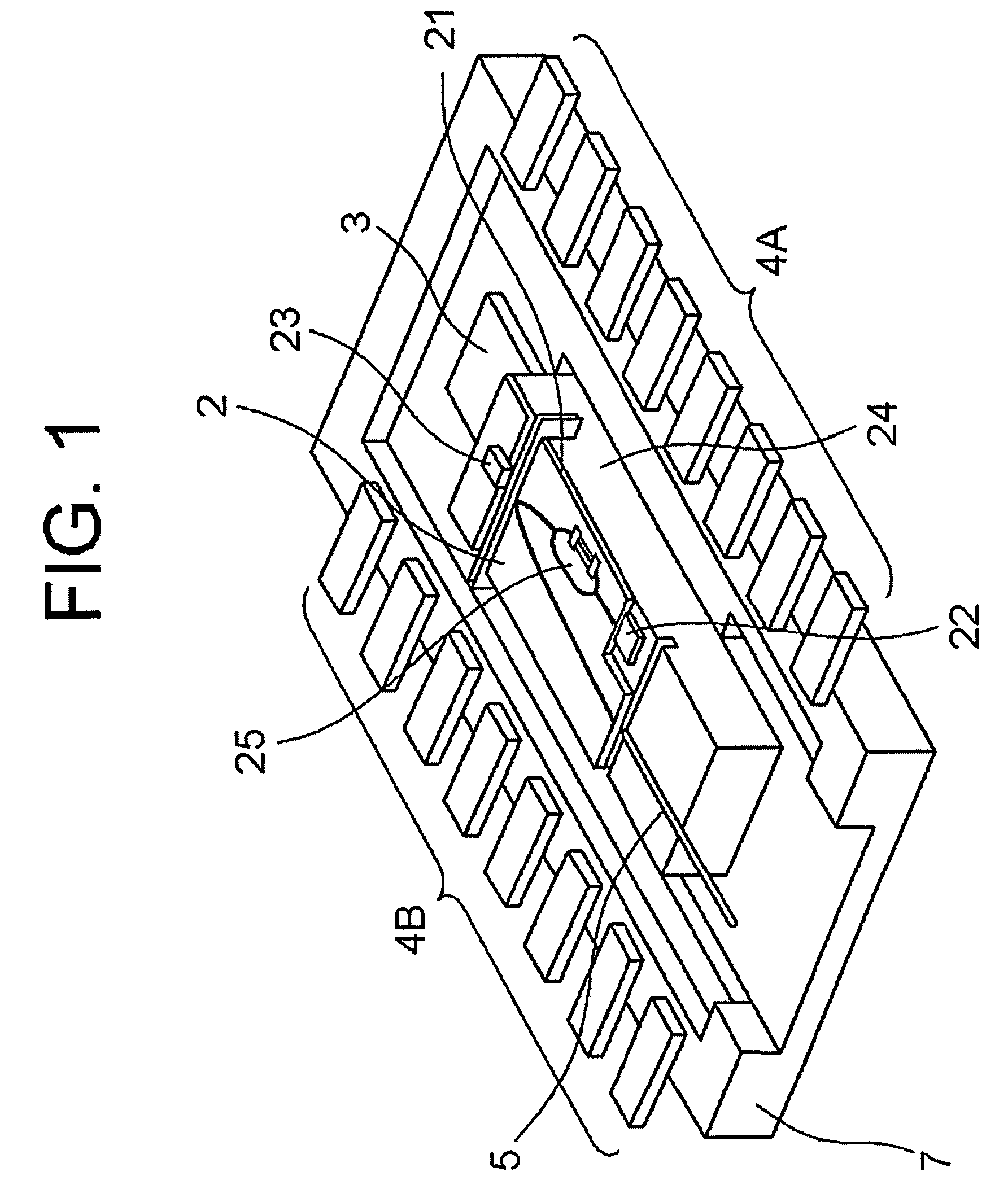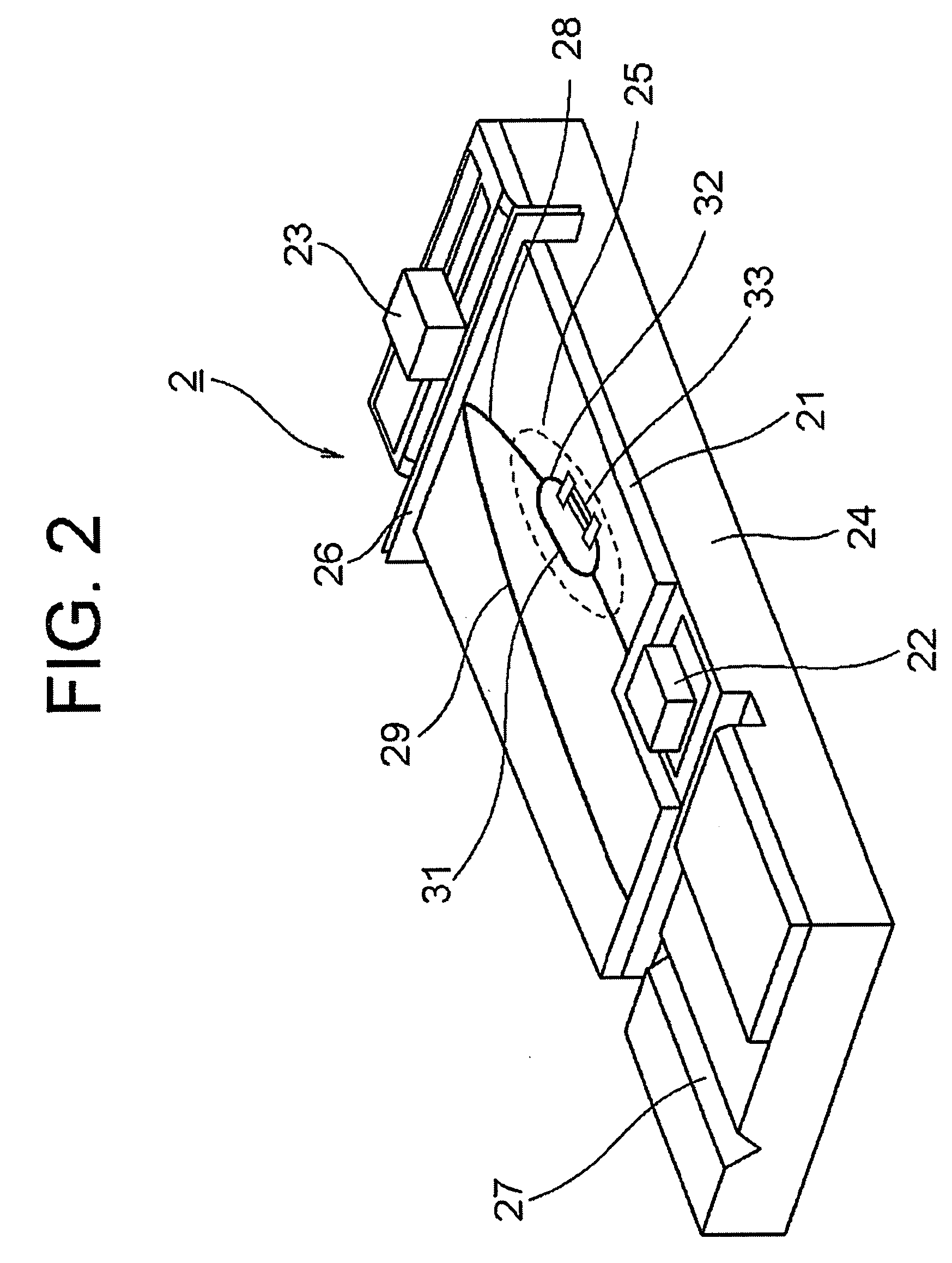Optical transmitter-receiver module
a technology of optical transmitter and receiver module, which is applied in the direction of optical elements, semiconductor lasers, instruments, etc., can solve the problems of low production efficiency of optical transmitter-receiver modules, increased components, and failure of subscriber devices
- Summary
- Abstract
- Description
- Claims
- Application Information
AI Technical Summary
Benefits of technology
Problems solved by technology
Method used
Image
Examples
Embodiment Construction
[0021]Hereinafter, exemplary embodiments of the present invention will be described with reference to the drawings.
[0022]FIG. 1 shows the configuration of an optical transmitter-receiver according to a first exemplary embodiment.
[0023]Referring to FIG. 1, the optical transmitter-receiver of the first exemplary embodiment includes an optical transmitter-receiver module 2 and a tranceimpedance amplifier IC 3, inside a ceramic package 7. The optical transmitter-receiver module 2 is configured as a hybrid integrated module in which a semiconductor laser element 22 and a photodiode element 23 are integrated on a silicon substrate 24 including a waveguide substrate 21, laminated thereon, which forms a planar lightwave circuit (unit structure). The transimpedance amplifier IC 3 converts a current output from the photodiode element 23 of the optical transmitter-receiver module 2 into a voltage. The optical transmitter-receiver module 2 is provided with an optical fiber 5.
[0024]The ceramic p...
PUM
 Login to View More
Login to View More Abstract
Description
Claims
Application Information
 Login to View More
Login to View More - R&D
- Intellectual Property
- Life Sciences
- Materials
- Tech Scout
- Unparalleled Data Quality
- Higher Quality Content
- 60% Fewer Hallucinations
Browse by: Latest US Patents, China's latest patents, Technical Efficacy Thesaurus, Application Domain, Technology Topic, Popular Technical Reports.
© 2025 PatSnap. All rights reserved.Legal|Privacy policy|Modern Slavery Act Transparency Statement|Sitemap|About US| Contact US: help@patsnap.com



